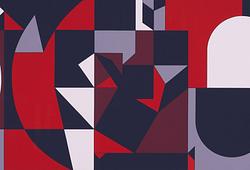Staffan Hallström
STAFFAN HALLSTRÖM, olja på duk, sign o dat 1952 a tergo.
"Konstnären och hans modell". 90 x 72,5. Utförd 1952-59.
Krackelyr i nedre kanten. Samt ytliga sprickor.
Exhibitions
Riksutställningar, utställning 106. Kulturhuset, Borås 1978. Utställd under titeln "I ateljén".
Literature
Stig Johansson, "Staffan Hallström", SAK publikation lxxxix, avbildad på helsida 154.
More information
Konstnären arbetade på verket under flera års tid. Målningen bär signering samt datering 1952 a tergo och under titeln "I ateljén" ställdes målningen ut på Riksutställningars utställning nr 106, 1978. Efter att ha arbetat vidare på målningen, har den visats med titeln "Konstnären och hans modell" och åsatts datering 1954-1959 (se Stig Johansson, "Staffan Hallström", SAK publikation lxxxix, sid 154-155.
Designer
Stephan Hallström supported his painting style with a strong expressive foundation. His paintings arose partly through its materials, but also through his inner psyche. The motifs took shape slowly and rather painstakingly. He revised, sketched anew, and painted over until he finally found a composition and color scheme that had the balance and expression he was seeking. Hallström drew inspiration from Delacroix, Rubens, Goya, and Hill's disease drawings. There is also a trace of Giacometti's drawing of figures and the depiction of intense emotional states.
In Hallströms art the sketching process is very important and his paintings radiate as much line work as painterly poetry. For the artist, revisions were crucial to the final result, and the fact that the creative process is allowed to remain in the finished work makes his paintings still feel very present.
The first version of "Ingens hundar" came in 1953. The artist personifies the dogs which have grouped themselves to protect each other from the greater world. Tall and alert, the dogs raise their gaze to their surroundings and they sniff as much danger as fresh morning air. In this tension of opposites, we find the synthesis of Hallström's painting.
Stig Johansson writes in his book about Staffan Hallström "The ideas and emotional states that drove the creation of "Ingens hundar" made these paintings some of the most original in Swedish art. His motifs and visual concepts remain so unique that they can hardly be compared to anything else."
Read more


































